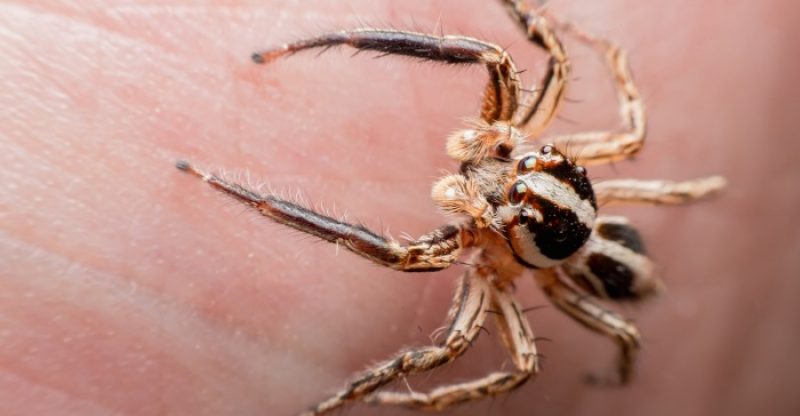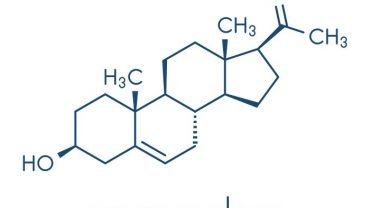Spider Bite Symptoms and Treatments
Have you ever woken up in the morning with a mysterious bug bite you can’t explain?
Ever been outside and come back with a red welt that doesn’t look like any mosquito bite you’ve ever seen?
Well, you could have a spider bite.
Getting bitten by a spider is usually pretty harmless, but knowing how to identify and treat a spider bite is an important life skill, especially if you live in an area with potentially dangerous spiders.
Our guide will tell you everything you need to know about treating spider bites, including how to know for sure that a spider is what bit you, how to treat your bite naturally, and ways to lower your risk of future spider bites.
While it’s true that nearly all spiders can cause little or no harm, there are a few that are risky for humans, and we’ll even cover how to identify those harmful species.
Understanding Spider Bites
Did you know that all spiders have fangs?
Some spiders even make their own venom, which allows them to kill their prey easily.
The good thing for us, though, is most spiders’ fangs are not able to actually break through human skin, and only a few spiders have venom that can kill a person.
While others can make you feel itchy and a little uncomfortable, your risk of dying from a spider bite is very low.
Types of Spider Bites
While there are approximately 40,000 species of spiders on the planet, only about a dozen can actually cause humans major harm.
The most dangerous of these species in North America include black widow spiders, brown recluse spiders, wolf spiders, hobo spiders, and tarantulas, but even these are rare and their bites are often only painful, not lethal.
In the US, the two spiders whose bites are the most cause for concern are the brown recluse spider and the black widow spider.
Spiders do not actively seek out humans to bite, and they generally only bite someone in self-defense.
It is very rare that a bite from one of these or another poisonous spider causes medical complications or death, but treating a spider bite is an essential step to ensuring that serious issues do not arise once you are bitten.
Where you live will determine the species of spiders that are most common and most likely to cause you harm.
Always learn about the species that are usual in your area, including how to identify them by sight.
You can contact local nature centers and public land managers, who will likely be familiar with the species most prevalent in your area.
Symptoms of a Spider Bite
Most often, you will not even know you were bitten by a spider until long after it has happened and the spider is gone.
In fact, many spider bites occur while you are sleeping.
Knowing the symptoms of a spider bite, then, is essential for selecting the right treatment for your bite.
Because not all spiders are the same, not all spider bites are the same, either.
Symptoms can range from mild to extremely serious, and even the bite site can appear differently depending on the type of spider that bit you.
Most spider bites resemble other types of bug bites.
They are usually red and inflamed, they can be itchy or painful, and there is often only one of them.
These symptoms will vary in intensity based on the type of spider that bit you, as well as the amount of venom they were able to inject.
Even your own sensitivity to bites and insects will determine your level of reaction to a spider bite.
The most common symptoms of a spider bite include (1):
- Inflammation
- Itchiness
- Redness
- A raised bump
- Mild pain
Black widow spiders are some of the most dangerous in the United States.
They are famous for the red figure of an hourglass that appears on the abdomen’s underside.
Black widows are black and usually plump in their middle sections.
The reason these spiders are considered dangerous is the symptoms their bites can evoke.
The symptoms of a black widow spider bite include (2):
- Painful, burning bite site. Onset is usually within 60 minutes of the bite.
- Pain that can spread from the bite site to the chest, abdomen, and back.
- Severe abdominal cramping or rigidity. This can even be confused with appendicitis.
- Elevated blood pressure.
- Sweating, and increased saliva production.
- A headache
- Vomiting and nausea
- Restlessness
- Numbness
Another type of worrisome spider in the US is the brown recluse spider.
On their backs is a trademark violin shape, and they also have six eyes.
The symptoms of a bite from a brown recluse spider include (3):
- Itching and pain. These increase steadily within the first eight hours after a bite occurs.
- Bulls-eye-shaped bite, with a center blister that usually results in an ulcer.
- Chills and fever
- Body aches
With brown recluse spider bites, most will heal within a week on their own, but sometimes that center of the bulls-eye can become necrotic and enlarge, destroying more tissue as it increases in size.
This ulcer can take months to heal, and a large scar can remain where living skin and muscle tissue once were.
Americans should also be aware of the wolf spider, which varies in color but can be tan, black, brown, or gray with dark markings.
Wolf spiders have two large front eyes and six smaller eyes.
The symptoms of a bite from a wolf spider include (4):
- Swollen lymph nodes
- Pain
- Redness and swelling
Most bites from a wolf spider heal within ten days, and rarely, bites from a wolf spider can cause permanent tissue damage.
Risk Factors for Spider Bites
While it is not very common to be bitten by a spider in the U.S., some factors can raise your risk.
One of the most significant risk factors will be your location, as some areas are home to more spiders in general and more dangerous spiders in particular.
The brown recluse spider and black widow spider are found mainly in warmer climates, and they prefer to live in dry, dark spaces.
When you disturb the area where a spider lives, you are increasing your chances of being bitten.
Areas, where spiders make their home, can put you at higher risk for a spider bite.
Black widow spiders like dark, undisturbed places where they can hide, so be careful around sheds, garages, unused containers, woodpiles, and clothing or shoes left outside for any length of time.
Brown recluse spiders prefer similar types of hiding spots outdoors, but they are also equally likely to be found inside, hiding in furniture or cabinets that see little use, in attics, and any area that doesn’t get a lot of foot traffic.
Brown recluses can often be found inside shoes or gloves that have not been worn in awhile, or under sheets from unused beds.
How to Know if It’s a Spider Bite
Most people who think a spider bit them were in fact either bitten by some other type of animal, such as a flea; are having an allergic reaction to something like poison ivy or another allergen; or have some type of infection, like MRSA.
Many other types of bites and ailments are often confused for spider bites, including tick bites, bed bug bites, various types of infections, and poison oak (5).
The best way to know if you have an actual spider bite is to seek medical care.
If you saw the spider that bit you and are concerned it may be one of the few harmful varieties, you should seek help immediately.
The quicker you begin treating a spider bite, whether from a harmless or harmful species, the better your chances of recovering quickly and painlessly with no adverse effects.
There are, unfortunately, some types of bites that are often misdiagnosed, which can lead to other problems.
For example, people sometimes confuse tick bites with those from a brown recluse spider.
If left untreated, a tick bite can cause Lyme disease, which is not an illness you want to leave unaddressed (6).
You should always talk with your physician about any bites of unknown origin, as an accurate diagnosis is the key to getting the best treatment possible.
Treating Spider Bites Conventionally
Most spider bites don’t actually require any medical intervention at all.
The most typical treatment medical professionals will administer to a spider bite is cleaning the wound and applying antibiotic cream.
If the bite is causing pain, doctors will often recommend an over-the-counter pain reliever such as ibuprofen or another NSAID.
If you are experiencing an allergic reaction to your bite, you can also take an antihistamine such as Benadryl.
If the bite becomes infected, you may need to take antibiotics to treat it.
Bites from more harmful spiders, like the black widow, may need to be treated using antivenin.
Because these bites can be life-threatening, you should seek treatment immediately.
While antivenin is effective at stopping or slowing the reaction to the spider bites, it can sometimes produce allergic responses on its own, so be cautious.
Treating Spider Bites Naturally
Because each spider bite’s reaction, symptoms, and healing time are specific to the type of spider that caused the bite, it’s difficult to say how long you can expect to have symptoms from a bite.
However, the vast majority of spider bites will heal within one week, and most within a few days.
You can treat nearly all spider bites at home with natural ingredients and remedies, and this will alleviate your symptoms sufficiently.
The natural remedies we include below are perfect for the most common symptoms of spider bites, including mild pain, itching, inflammation, and redness.
As always, if you know or strongly suspect a poisonous spider bit you, you should seek medical attention immediately.
If your bite was from one of the tens of thousands of harmless spiders, though, the following natural treatments for spider bites are exactly what you need to start feeling better soon.
Ice or Cold Compresses
After cleaning your spider bite with warm water and soap, you can apply an ice pack or cold compress to keep swelling to a minimum.
Use ice for up to ten minutes at a time, repeating every hour as needed.
Ice reduces the inflammation caused by the bite and helps ease the pain, as well.
Elevate the Wound
Immediately after washing and applying ice to your spider bite, elevate that part of your body above your heart.
This will reduce swelling and decrease inflammation.
Elevating a wound is a time-honored way to keep swelling at bay, and it works well for spider bites.
If you are bitten by one of the more harmful species of spiders mentioned earlier, be sure to elevate your spider bite until you can seek medical help.
This will slow the spread of the venom, and help treatment efforts later on.
Baking Soda
The alkaline properties of baking soda can help draw out the toxic venom of a spider bite.
This will reduce inflammation, itching, and pain, too.
Make a paste of baking soda and water in a one-to-three ratio, then apply this to your bite using a cotton ball.
Allow to sit for five minutes, then rinse the area with warm water.
Repeat every few hours until the pain and discomfort subside.
Lavender Essential Oil
Lavender has many soothing properties, so applying it to your spider bite can help decrease inflammation and promote healing.
Like most essential oils, lavender oil should be mixed with a carrier oil, like coconut oil, before applying it to your spider bite.
Reapply as needed to control your symptoms.
Activated Charcoal
As a natural remedy, activated charcoal has many purposes, including for the treatment of spider bites.
Make a paste of activated charcoal and water, and apply to your spider bite.
Like baking soda, activated charcoal can help draw out the venom that is causing your symptoms.
The paste should be applied, then left for at least one hour.
Repeat this process twice per day until your symptoms are entirely alleviated.
Witch Hazel
Witch hazel has been used for centuries to clean wounds and reduce the risk of infection.
Apply it directly to your spider bite to clean the wound.
Witch hazel also soothes, so it will reduce the irritation and redness caused by your spider bite.
Aloe Vera
Aloe vera is an excellent treatment for many skin disorders, including spider bites.
Aloe relieves any itchiness and inflammation caused by spider bites.
If you are not using aloe straight from the leaf, be sure your product is pure aloe vera gel and no other ingredients.
You can apply aloe several times per day as needed to relieve spider bite symptoms (7).
Peppermint
Peppermint is an anti-inflammatory herb, and it relieves pain.
Peppermint can help reduce the swelling, inflammation, and pain associated with spider bites, as well as soothe itchiness.
You can use either fresh extract from peppermint leaves, or peppermint essential oil.
Apply to the affected area several times per day.
Because it has potent compounds, test your skin in another area for any possible reaction to peppermint before using on your spider bite.
Tips for Treating and Preventing Bites
- Always monitor any bite closely over several days. Check to see that the bite is not increasing in size or changing color. Monitor that it is healing appropriately.
- If you see the spider that bit you, try to remember as many distinguishing characteristics as you can. This will assist the medical staff in treating you appropriately if the spider is venomous.
- Always be cautious when cleaning out or working in a crawl space, attic, shed, basement, or garage, or any space that has been unused for some time.
- If you are handling firewood or boxes of stored items, you should wear a hat, pants, a long-sleeved shirt, and gloves.
- Installing tight-fitting doors and screens on windows will help keep spiders outside your home.
- Before using gardening tools, always inspect them and shake them out.
- Always check inside boots and shoes before putting them on your feet.
- If you have unwanted items in your home, discard them, rather than storing them. Keeping these items just gives spiders a place to hide and nest.
- If you have piles of rock in your garden or yard, remove them.
Precautions
If you are bitten by a poisonous spider, you should take your symptoms seriously.
Always seek medical attention if you or someone you love has been bitten by a spider you think was poisonous.
While spider bites from harmful species are very rare, reactions can be serious and life-threatening, especially in children, the elderly, and those with serious medical conditions.
If you or someone you love is experiencing any of the following after a spider bite, get medical help immediately if (8):
- The person is having trouble breathing.
- The person is in severe pain.
- The person has abdominal cramps.
- The bite site is increasing in size or has formed an ulcer.
- The bite spreads or appears worse after applying first aid.
- The person is unsure if the spider was poisonous.
Very rarely, a spider bite can cause anaphylactic shock due to an allergic reaction.
This can be fatal if not treated quickly.
Call 911 or drive to your nearest emergency room if the person who was bitten:
- Has a rapidly swelling tongue, lips, or throat, or has swelling around their eyes.
- Is having difficulty breathing.
- Is dizzy.
- Is wheezing or hoarse.
- Has severe cramps, numbness, or itching.
- Loses consciousness.
- Has hives or a rash.
If the bite does not heal or worsens over time, you may have an infection.
Signs of an infection include increased redness, swelling, or pain, as well as swollen glands, a fever, or other symptoms that resemble the flu.
Conclusion
Spider bites are not very pleasant, but the good news is that they are usually easily treated and heal quickly.
The majority of spider bites are not serious and can be treated with a few simple, natural techniques at home.
Your symptoms will vary depending on the type of spider that bit you.
Most bites people believe to be from a spider are actually from another source entirely.
Natural treatments for spider bites include ice, elevation, baking soda, lavender oil, activated charcoal, aloe vera, witch hazel, and peppermint.
FDA Compliance
The information on this website has not been evaluated by the Food & Drug Administration or any other medical body. We do not aim to diagnose, treat, cure or prevent any illness or disease. Information is shared for educational purposes only. You must consult your doctor before acting on any content on this website, especially if you are pregnant, nursing, taking medication, or have a medical condition.
HOW WOULD YOU RATE THIS ARTICLE?






